Field Sales: How to Manage Your Outside Sales Force More Efficiently
9 min read

Your sales reps cover a wide area. Their meetings can last from 10 seconds of ringing a doorbell to multiple hours meeting a whole company’s board.
Then they have to drive to the next call or meeting while also planning their tomorrow.
Alternatively, you have a dispatcher responsible for a whole team of field sales representatives. And that person has to do it all for everyone.
Managing field sales can be exhausting, let alone costly and inefficient.
Is there a better way?
In this article, we’ll walk you through it. We’ll discuss the challenges you’re likely to be facing and give you the answers you’re looking for: a way to manage your field sales more efficiently.
In this article, we’ll cover everything you need to know, including:
- What Is Field Sales?
- What Does a Field Sales Rep Do?
- Unique Field Sales Challenges for Sales Reps
- Unique Field Sales Challenges for Dispatchers and Managers
- What to Do: Route Planning for Sales Reps
- What to Do: Route Planning for Dispatchers
- Manage Your Field Sales Force More Efficiently With Smarter Tools
What Is Field Sales?
Field sales, sometimes known as outside sales, is the business practice of sending sales representatives to visit customers and sell a product or service in person.

While door-to-door sales is a subcategory of field sales, cold selling trinkets and vacuums in-person isn’t what most outside salespeople do in 2020. Instead, it’s typically focused on B2B sales and new client onboarding, long-term relationship building, and account management.
Sales representatives have to take their time to build rapport with their prospects, and over the long term, convince them to try their product or service.
What Does a Field Sales Rep Do?
Exactly what a field sales rep does depends on the industry and business, but most commonly, the sales process starts with a list of leads.
It’s the job of the individual representative to take the list of company names, contact people, and phone numbers, and start relationships with and sell to as many companies as possible.

Let’s take a closer look at the main tasks and duties of an outside sales professional:
1. Track and manage leads
A field sales rep needs to collect, manage, categorize, and track the progress of leads and prospects. They typically do this in a CRM system, but in an outside-sales heavy industry, they might use specialized sales pipeline management tools.
2. Qualify prospects
Before a rep devotes hours of their time to a meeting with a potential customer, you need to verify that they need your product/service, and have the ability to pay for it. Sales reps typically qualify prospects by doing research, or over the phone, or a junior sales rep might arrange a quick preliminary meeting.
3. Make sales runs
Once you trust that the prospect is a legit sales opportunity, it’s time to prepare a sales strategy. Reps will head out of the office to pitch the company’s main offerings to local businesses or other potential clients. These runs can cover the local area or a larger territory, requiring weeks to cover.
4. Follow up with potential clients
Once a prospect is interested, the sales rep must strike while the iron is hot. Follow-ups are sometimes made over the phone but can be done in person as well.
5. Manage accounts
Once you have closed a deal, it’s the agent’s job to schedule quarterly, biannual, or annual meetings to make sure the client relationship is healthy and productive.
Unique Field Sales Challenges for Sales Reps
While qualifying new leads and closing deals are the main goals in any area of sales, field sales pose a unique set of challenges to reps because you need to meet with each prospect in person.
The average field sales rep makes $67,866 per year. If you want to hit or exceed the average, you need to tackle and overcome the following challenges.
1. Planning takes too much time
Whether you’ve been assigned a list of leads or just a sales territory to cover, it’s challenging to come up with a plan of attack.
- Which area should you start in?
- Which time windows are the business owners likely available?
- In which order should you visit your prospects?
- If a meeting takes more or less time than planned, what do you do?
There are a lot of factors to consider.
2. Covering a wide area without wasting time or gas
66% of B2B sales cycles last between 2 and 12 months, and require multiple in-person visits to close.
But it’s expensive to travel through cities, counties, and states, to visit a handful of companies over and over (referred to as the travelling salesman problem). Driving back and forth without an optimal route is an easy way to waste time and gas.
3. Maximizing sales visits in spite of restrictions
The more sales meetings you can get, the more deals you will close. Prioritizing VIP accounts with planned meetings, while also scheduling sales visits for other prospects is hard.
You need to consider potential account size, priorities, available time windows, and date or day of week restrictions.
4. Manually looking up destinations
Manually going through your list of sales leads and looking up routes and destinations in your Maps app on your phone isn’t an efficient process.
It also introduces the risk of human error; you could type in the wrong address and end up wasting hours.
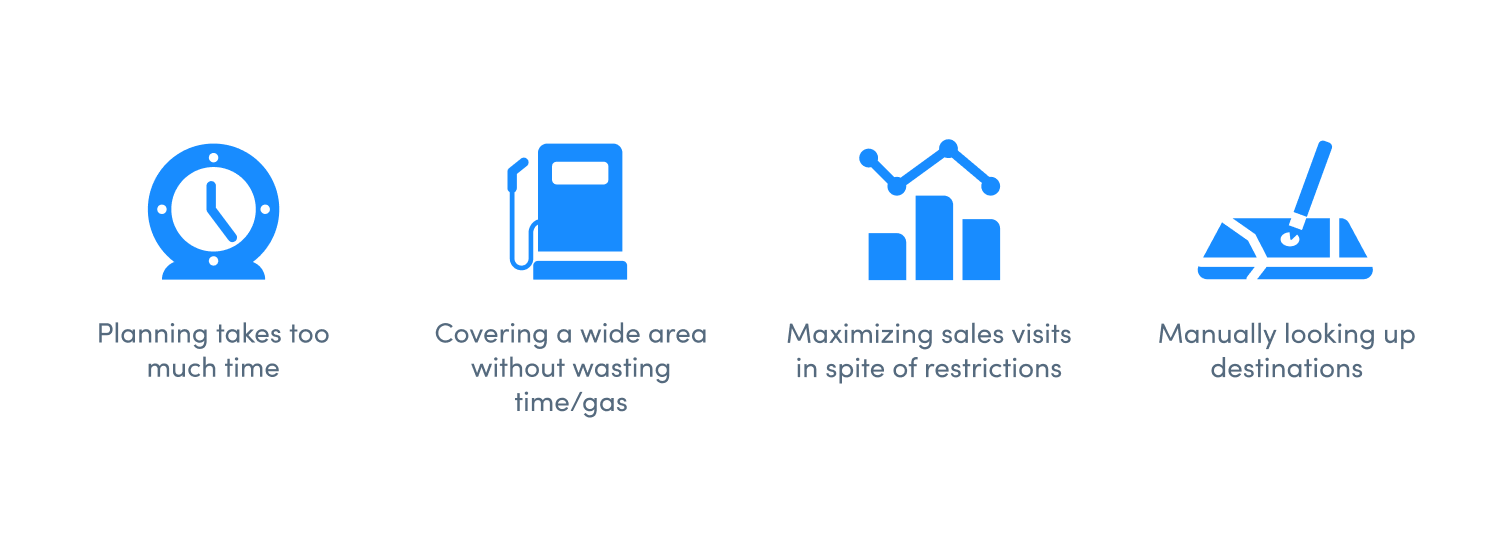
5. Planning for the long term
It’s challenging to plan long term when you’re not just working out of an office. You have to consider unique traffic conditions throughout the day and area, meeting times that might change, and a lot of other dynamic factors.
Unique Field Sales Challenges for Dispatchers and Managers
Despite modern technology, most major industries still rely heavily on outside sales. For example, 74% of medical sales agents were still field reps in 2019. But managing a workforce of salespeople who are constantly on the road can be tough.
You need to consider rapport and existing relationships when assigning sales territories. To allocate last-minute meetings efficiently, you need to know where salespeople are at all times.
Let’s cover the challenges in more detail.
1. Hard to assign the right rep to each meeting
49% of businesses use a blended approach of inside and outside sales, warming up and getting to know leads before trying to close in person.
So religiously following the assigned sales territories isn’t always the right approach. You need to consider customer history, sales rep specialty, and other factors.
2. Keeping track of reps is a huge challenge
Field sales is an industry where a lot of significant changes can happen at the last minute. So you need to keep track of every member of your sales team at all times. But without the right tools, it’s just not feasible.
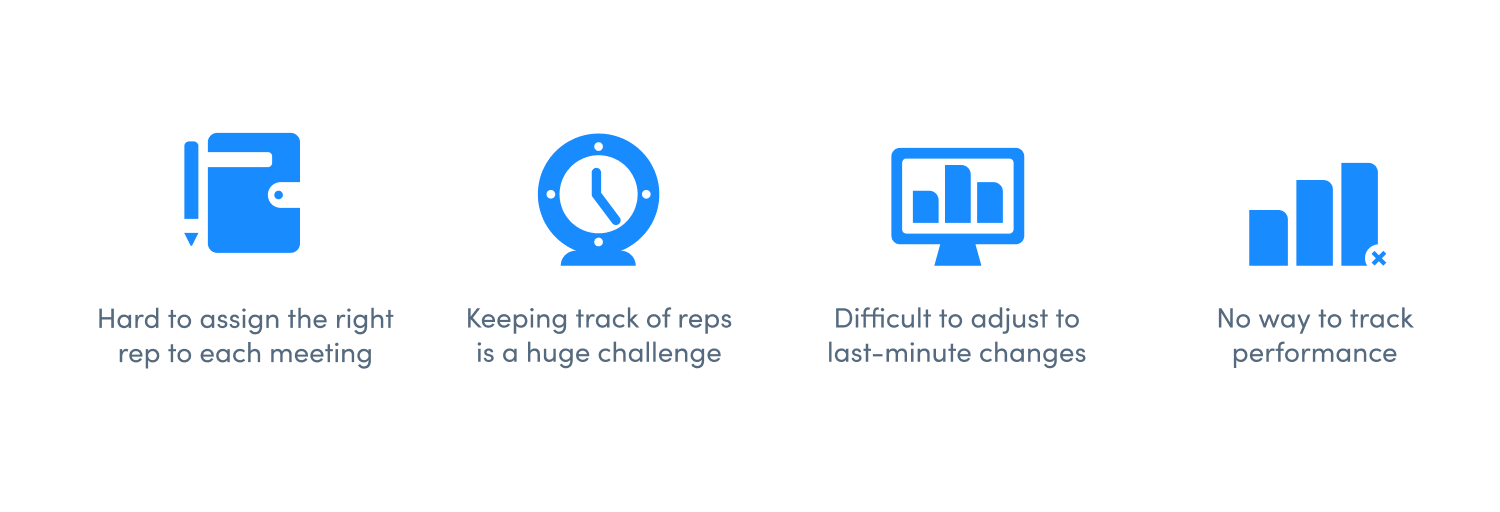
3. Difficult to adjust to last-minute changes
Even if you do know where all your reps are, some last-minute changes require significant changes to schedules that are very hard to implement manually.
For example, if a salesperson calls in sick, dividing up their appointments among reps in adjacent territories is a task that can take hours, or even days.
4. No way to track performance
Are your reps following their schedules? Are they getting to their meetings on time? How many sales meetings are they doing per week?
With a manual setup, you have to rely on sales reps self-reporting all these metrics.
What to Do: Route Planning for Sales Reps
In many industries, sales reps can be responsible for multiple cities, a metropolitan area, or even an entire state/region.
With OptimoRoute, you can optimize your planning process, identify better routes instantly, and save time and money.
1. Handle more sales meetings with dynamic long term planning
As a salesman who relies on commission, if you want to meet your sales goals, then it’s key to maximize your schedule and get as many meetings as possible without having to rush through pitches or neglect prospects.
Rather than waiting at the beck and call of your prospects, it’s much more efficient to line up meetings in advance, offering dates and times that work with your existing workload.
OptimoRoute’s weekly planning simplifies time management and will help you create long-term plans that consider your schedule, existing appointment locations, traffic conditions, date ranges, time windows, type of meeting, account importance, and more.
2. Plan your sales runs 7x faster
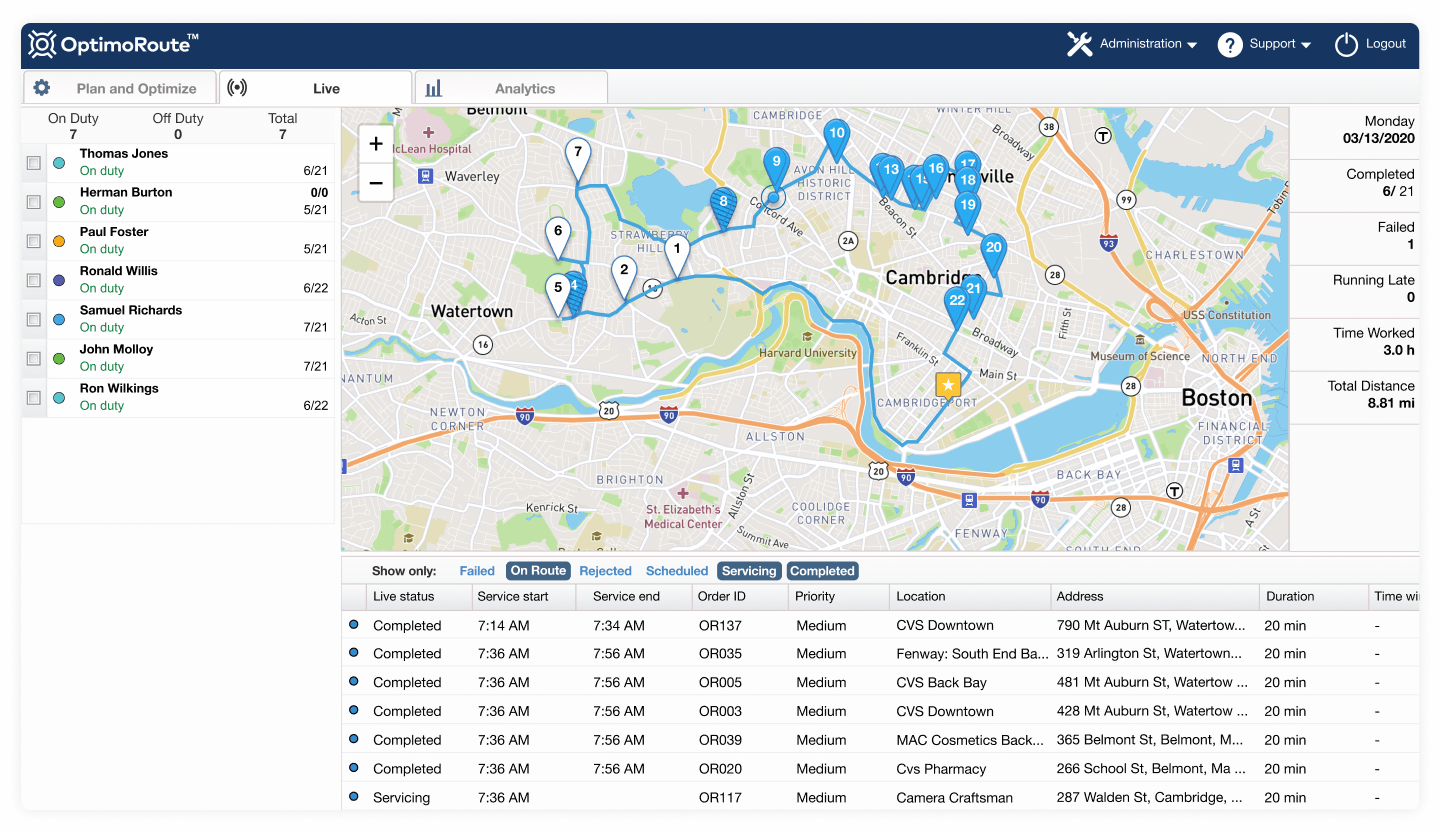
All you have to do is add the individual stops, and OptimoRoute uses route optimization to automatically map the most efficient path for your sales run.
Most of OptimoRoute’s clients see significant reductions in planning times.
For instance, Gallagher Pools, which sends its field sales and installation professionals all over Maryland, cut its planning times in half.
But that wasn’t the end of their success. With OptimoRoute…
- Mileage was decreased at least 8,000 miles a month
- Overseeing the entire day’s operations means that workloads can be balanced on the go
- Flexible pricing means they can adjust how much they pay according to the season
For a complete look at the route optimization and planning strategy implemented by Gallagher Pools, you can check out their success story.
3. Spend less time on the road and less money on gas
With OptimoRoute’s smart routing tools, you will find the fastest way to visit all your prospects.
Our clients have saved up to 20% of monthly mileage because of better planning. Imagine if you spent 20% less time on the road, and could devote that time to selling instead.
4. Create optimized schedules that consider priorities and restrictions
You can easily categorize and prioritize VIP clients and high-value prospects based on time constraints.
Accurate arrival time predictions and Realtime Order Tracking with notifications help ensure that clients remember your meetings. (You don’t need to add “what if” buffer time to your schedule.)
5. Mobile app minimizes tedious manual tasks
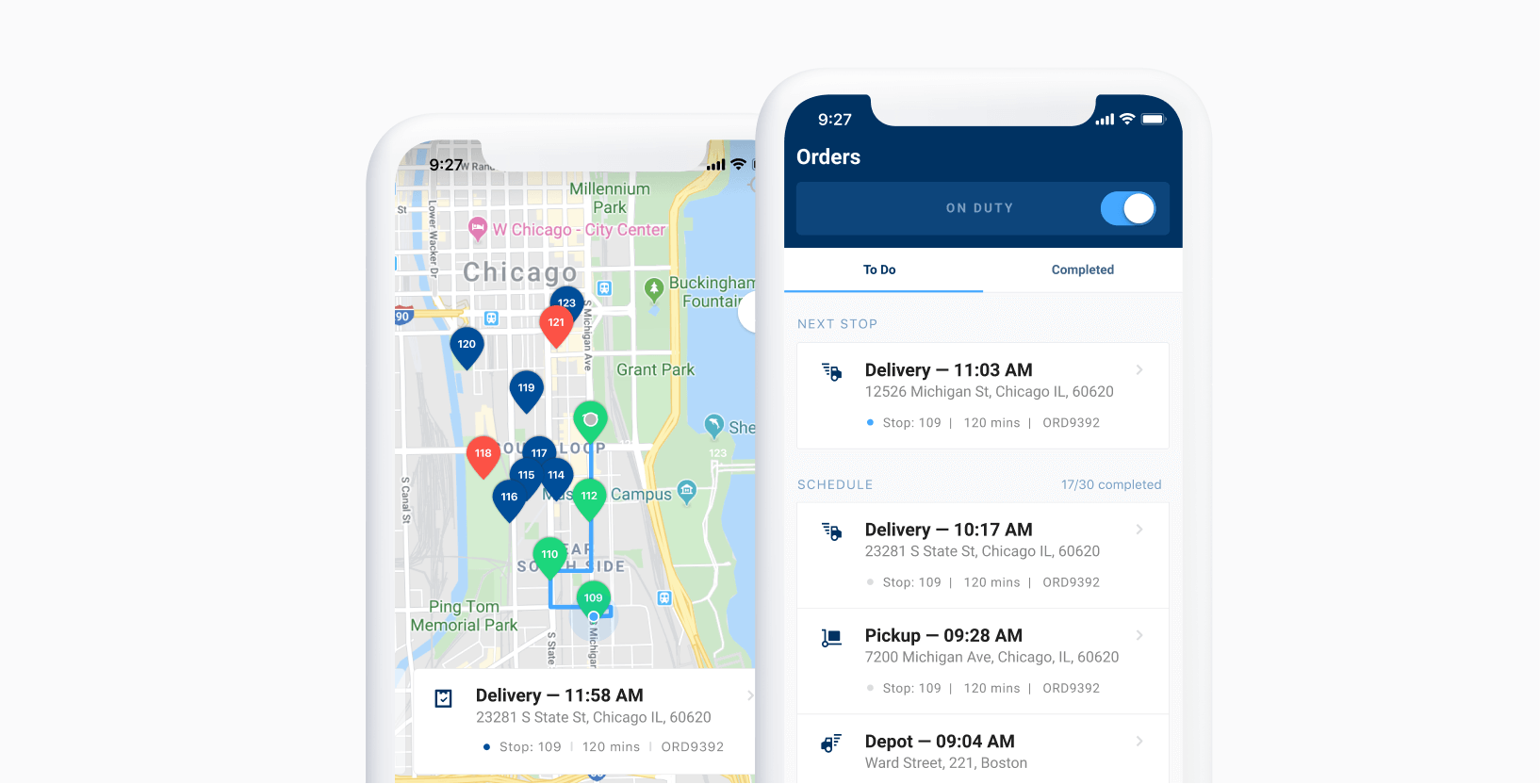
The OptimoRoute mobile app will guide you from client to client — there is no need to insert locations or look up meeting times manually.
What to Do: Route Planning for Dispatchers
In addition to the time and money-saving benefits we covered at the sales representative level, some benefits are unique to dispatchers and managers.
1. Control which rep meets with which prospects
You can set specific sales territories or service areas on the sales rep level, which controls which orders/meetings they get assigned.
But you can also set up other criteria for assigning meetings. If a particular rep has a rapport with a specific client or a more suitable background to handle a VIP account, you can override the location-based allocation.
2. Real-time locations for all your reps
OptimoRoute’s live tracking feature shows you exactly where all your reps are in real-time. You will even have access to live ETA reports indicating if reps will be late for meetings ahead of time, so you can address the problem.
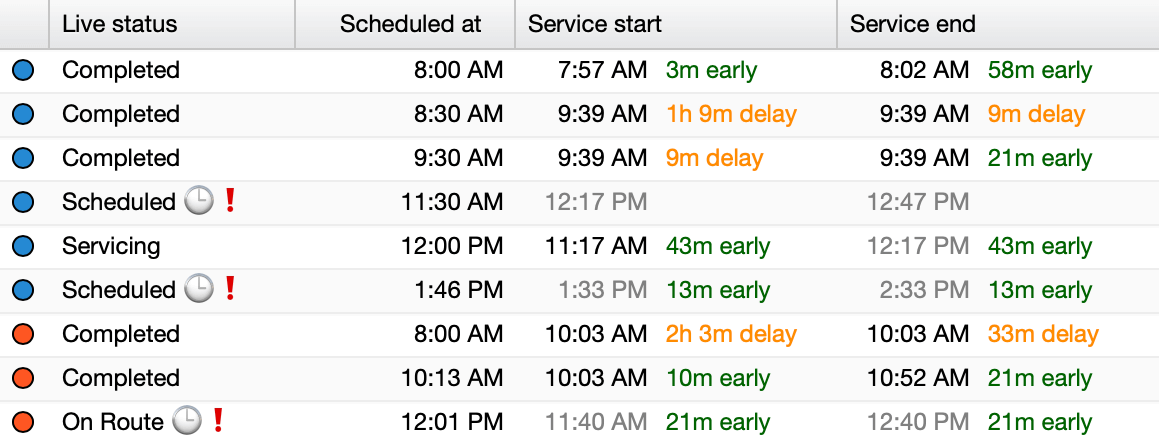
3. Replan schedules with minimal effort
Quickly adapt to time-sensitive challenges like last-minute meetings, cancellations, and employees calling in sick.
Once you implement the manual changes, OptimoRoute will automatically recalculate the routes and schedules of all reps involved. That way, you don’t need to manually change everything or do multiple reminder calls with each team member.
4. Performance insights with analytics
While OptimoRoute won’t give you any sales data, it will show you how many sales visits/meetings your reps have been completing, whether they’re on time, total distance traveled, and more.
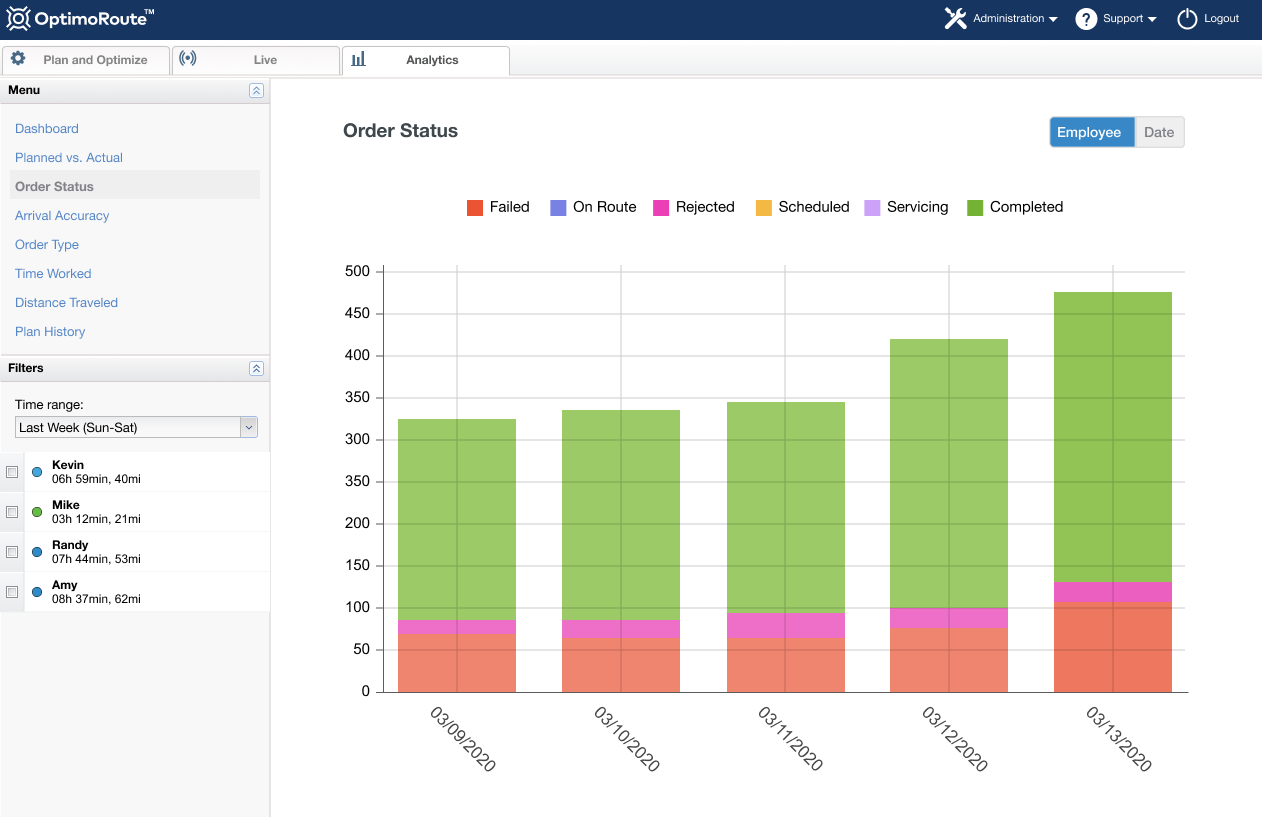
Manage Your Field Sales Force More Efficiently With Smarter Tools
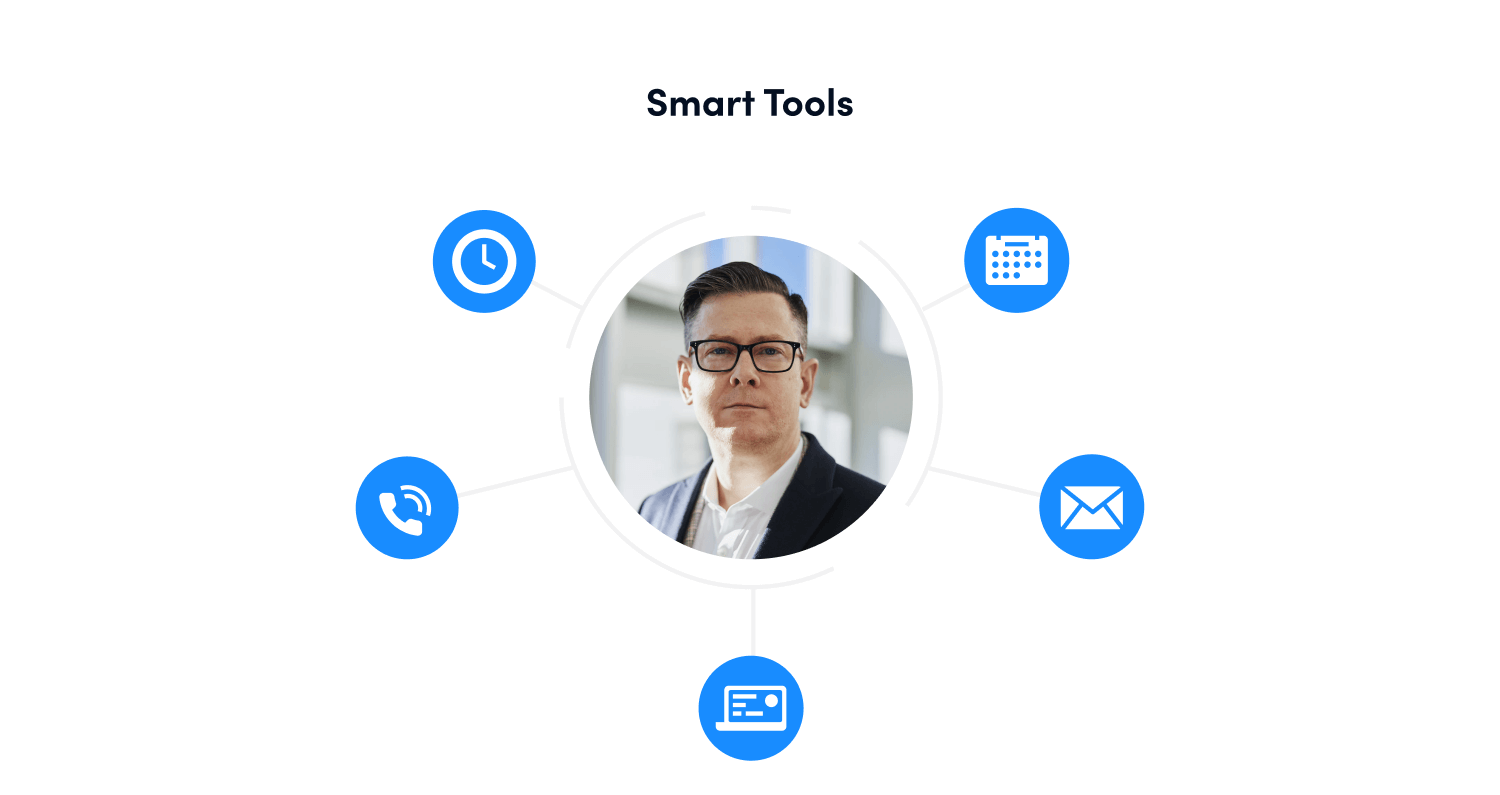
When the majority of your sales team work outside sales, they will be out of the office a significant portion of their working hours.
So for efficient field sales management when it comes to remote sales, you need to rely on a powerful mix of software tools.
1. Use sales route planners to save time and gas
Sales route planners make it easy for your field reps to navigate their sales territory efficiently. It will help them spend less time in their car and more time face-to-face with potential customers.
OptimoRoute will help you save a significant amount of time on planning schedules and routes for visiting clients. More optimal paths will save time and gas, and your reps will be able to take more sales meetings.
Recommended sales route planning tool:
Further reading: Why Use Route Optimization Software?
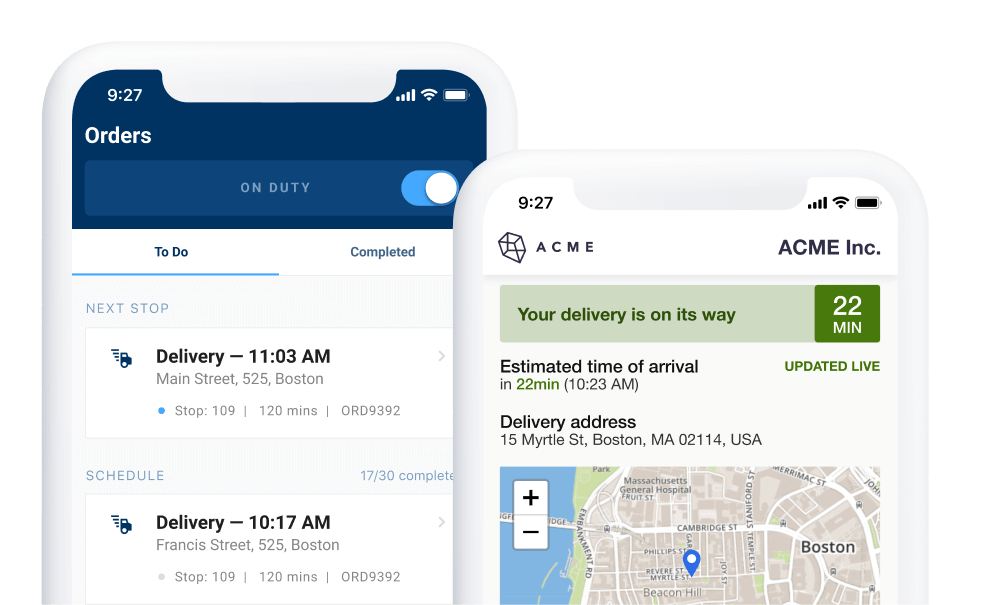
Reduce your operational costs by 30%
Increase delivery capacity by 43%
Plan 7x faster
2. Use CRM solutions to track customer relationships
A CRM (Customer Relationship Management) solution is necessary for all large field sales teams. They give your agents context on each prospect and account, which allows them to tailor their sales approach to each potential customer’s needs.
Recommended CRM tools:
3. Find more leads with prospecting tools
To consistently line up meetings with businesses in your sales territory, it’s essential to use a prospecting tool.
Recommended prospecting tools:
- LeadMachine
- LinkedIn Sales Navigator
- NinjaOutreach
4. Oversee tasks through tasks management and collaboration apps
To collaborate effectively when on the road, your sales team must use task management or team collaboration solutions that they’re comfortable with.
Recommended project management and collaboration tools:
5. Forecast revenue with sales forecasting tools
With sales forecasting tools, you can review the progress of your sales pipeline to make accurate predictions about monthly/quarterly/annual sales volume.
Recommended sales forecasting tools:
Conclusion
Field sales is a complicated industry that makes planning, scheduling, and management almost impossible without the right tools.
If you just leave each rep to their own devices, you’ll be sacrificing work hours, miles, and customers. Instead, you should find a mix of processes and smart tools that help you maximize the sales capacity of every rep.
If you want to see how OptimoRoute can help your agents cover their sales territory more efficiently, take us out for a test drive today.
Try OptimoRoute™ for Free
No installation or credit card required


